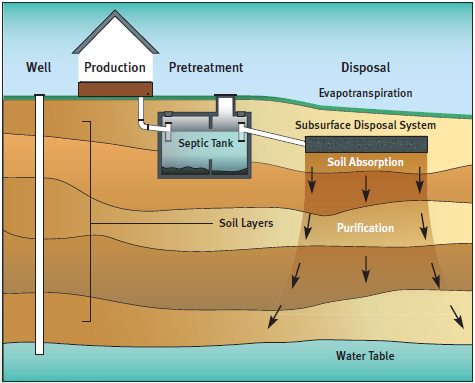 A septic system consists of two main parts, the tank and the drain field. The tank receives wastewater from the kitchen, bathroom, and laundry room.
A septic system consists of two main parts, the tank and the drain field. The tank receives wastewater from the kitchen, bathroom, and laundry room.
When the wastewater enters the tank, the solid elements of waste sink to the bottom, which forms the sludge layer.
Meanwhile, elements of grease and lighter solids float to the top, and this forms the scum layer. These layers takes roughly a day to separate after entering the tank.
Between these layers of scum and sludge, water pushes through and out into the drain field. The scum and sludge are eaten up by bacteria over time, and this prevents the top and bottom layer from growing too large too fast. However, sometimes the bacteria cannot keep up with the inbound volumes of wastewater into the tank.
When this happens, impurities can get pushed out into the drain field. In any case, a septic tank must be pumped every three to five years to prevent the scum and sludge layers from rising too high.
